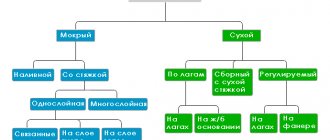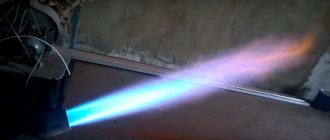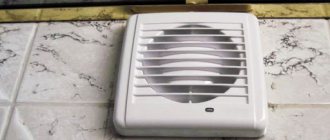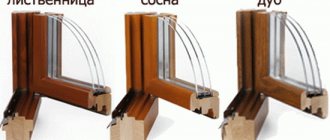For many people, the words difavtomat and RCD mean nothing. But the time comes to replace the electrical wiring in the house or the construction of a summer house begins, and experts constantly mention them, the need for protection against electric shock, and offer different options. This is where the home owner needs to make a choice, and the right one.
He wants to get reliable protection against electric current for reasonable money, without overpayment and unnecessary equipment. To do this, you need to understand a little about the devices, their purpose, differences, advantages and disadvantages. It will be useful for any novice electrician to understand what the difference is between different RCDs.
Purpose of residual current devices
The RCD protects the insulation of electrical wiring and prevents fire. And it protects a person from exposure to electric current when touching parts of devices that have phase voltage.
The RCD is triggered by an imbalance of currents in the phase and neutral wires of the protected electrical network. This happens when an insulation breakdown occurs and an additional leak appears.
Flowing current through unauthorized materials may result in a fire. In buildings with dilapidated electrical wiring, fires from damaged insulation occur quite often.
Another dangerous case is touching live parts of devices that should not be energized under normal conditions. The current begins to flow to the ground through the person, bypassing the neutral wire.
In this case, the circuit breaker will not work, since it requires currents of at least tens of amperes to turn off. Currents starting from 30 mA and above are dangerous to human life. The ability of the residual current device to respond to 10-30 mA is reliable protection against the effects of electricity.
You should know that an RCD does not provide protection against overcurrents; this is the main difference between an RCD and a difavtomat. In a situation where there is only an RCD and a short circuit occurs, the device will not react, and it may also burn out itself. It is not used separately, without a circuit breaker.
If the question is what to choose - an RCD or a difavtomat - you need to understand that together with the RCD you will definitely have to install a circuit breaker in the circuit.
Price
Let's calculate how much money you will have to spend on the above schemes. For convenience, we use the cost of equipment from ABB:
Calculating the cost of RCD equipment + automatic machines
Now we’ll do the same calculations for using difautomatic machines:
Calculating the cost of difavtomats
It turns out that using automatic devices is three times more expensive than using a combination of RCDs + automatic devices.
Purpose of the differential machine
The difavtomat is used to protect the electrical network from overload, short circuit and leaks. In addition to the capabilities of an RCD, it performs the functions of a circuit breaker.
It happens that a person connects an extension cord with five or six additional sockets to one outlet, and connects several powerful devices through them. In such circumstances, overheating of the conductors is inevitable.
Or, let’s say, when the electric motor is turned on, the shaft jams, the winding begins to heat up, after some time a breakdown occurs, followed by a short circuit of the wires.
To avoid this, a difavtomat is installed. If the current excess is significant, then the difavtomat will turn off the line within a few seconds, without waiting for the insulation to melt, thereby preventing a fire.
The speed of switching off the automatic circuit breaker depends on how many times the flowing current exceeds the rated current for a given line. If the voltage is exceeded multiple times, up to a short circuit, the electromagnetic release is instantly triggered.
If the current flowing through the line exceeds the rated current by more than 25%, then after about an hour the device will turn off the line and the thermal release will operate.
If the excess is greater, the shutdown will occur much earlier. The response time can be determined from the time-current characteristics given for each device.
How to avoid 3 mistakes when connecting an RCD
There are mistakes that inexperienced electricians make when choosing and installing an RCD:
- Insufficient rated current of the device. It is selected no less than that of the input machine or connected equipment.
- Single-core wires of different sections are connected to one terminal. This will lead to poor contact and failure of the device.
- The single-core wires must be bent before connection so that they can be inserted without force. If this is not done, they will not provide reliable contact or will break the terminal.
Appearance
General unification has led to the fact that it is very difficult to discern the difference between a difavtomat and an RCD based on the shape and size of the case.
For a single-phase network, the housings of these devices have a size equal to two housings of a single-pole circuit breaker. Each of them has a test button, they are two-pole. Installing an RCD on a DIN rail is no different from installing a difautomatic device.
Externally, differential circuit breakers differ from RCDs:
- according to the inscriptions on the front panel;
- labeling;
- functional diagram.
Usually at the top of the device below the name of the manufacturer is the name of the device. For example, VD and several numbers. VD means differential switch, that is, it is an RCD.
If the abbreviation RCBO is present (an abbreviation for the expression: residual current automatic switch), then it is a difavtomat. In case of damage to the inscription on the front panel, the manufacturer prudently embossed the name of the device on the side of the device.
True, to determine the type of device you will have to remove it from the DIN rail. But this method applies mainly to domestic manufacturers.
Foreign suppliers do not bother about this. Therefore, you have to navigate by markings and diagrams.
Rated current designation
The difference is observed in the designation of the rated current. In the RCD it is written as a number, for example 16 A, which means that the device will operate normally at currents not exceeding 16 amperes. The main characteristic for it is the value of the shutdown current.
For a difavtomat, in addition to the leakage shutdown current, the time-current characteristic is important. It determines at what overload currents and how quickly the device will turn off.
Therefore, before the rated current value there is a letter indicating the limit of exceeding the rated current at which the device will instantly operate. If there is an inscription on the front panel, for example, “C16”, then this means that this is a difavtomat.
The electromagnetic release of this automatic device will instantly disconnect the line when the rated current is exceeded by 5-10 times.
Functional diagram
On the RCD diagram on the front panel, you can see an image of the magnetic circuit of the differential transformer, a test resistor, three switches and a control winding.
Two switches disconnect the phase and neutral wires in case of leakage currents exceeding the setting. The third key is needed to allow the current limited by the resistor to flow, bypassing the transformer. Thus, an imbalance is created between the currents flowing through the phase and zero.
The diagram of the difavtomat, in addition to the RCD diagram, shows a key connected to the phase wire at the output of the transformer. Or maybe a different image.
Instead of an additional key, a square is shown with a figure inside a positive sine wave and a rectangular pulse. A sine wave means an electromagnetic release, and a square wave means a thermal release.
Video description
The video explains how to choose the right automatic shutdown device:
See also: Catalog of companies that specialize in electrical work of any complexity
Difavtomat
Such a device technically combines a protective and automatic shutdown device - this is the main feature of how a difavtomat differs from an RCD.
Two-pole automatic circuit breaker Source pp.userapi.com
Here the functionality is expanded by sensitivity to overloads on the service line and short circuits. The first occurs when equipment with greater power is connected to the circuit than that of the selected device for protecting communications. The second phenomenon is the result of a decrease in resistance on the line, which provokes an increase in current.
Let's look at the design of a circuit breaker to understand the additional function of a differential device. It is designed to solve three problems:
- circuit switching on a specific section of the power network;
- protection of the line from excess current flow;
- shutting off the energy flow when a short circuit occurs.
Based on the above, protection and control of the serviced line are performed simultaneously. In a multi-module machine, one of the main components is a thermal release. This is a bimetallic plate that deforms when heated to a specific value. Bending the sensing element activates the device's shutdown mechanism.
Thermal release in a machine Source yaelectrik.ru
The second version of the release is electromagnetic. This is a spring core winding (solenoid). Here, the opening of the serviced circuit occurs due to the magnetic flux. It is induced in the coil during a short circuit and acts on the core (moves). Technically, through flexible conductors, current passes from the input cable, first to the solenoid, then to the thermal release, then through the terminal to the line to the equipment.
Bending the bimetallic plate takes some time (it is required for deformation). Triggering occurs when the current load reaches within 1.13-1.45 (13-45%) based on the rated value of a particular machine. The solenoid comes into action almost instantly (0.02 seconds), but the current here must be at least three times the declared amperage.
Other differences
Already from the purpose of the devices it becomes clear what the difference is between them. The difavtomat is more universal; it includes RCD functions. But beyond the features and appearance, there are other differences.
Price
An important difference is the price. A differential circuit breaker is significantly more expensive than an RCD. Even if the RCD is functionally equal to that of a difavtomat by connecting an additional circuit breaker, the cost of the difavtomat will still be higher.
Dimensions and maintainability
The occupied volume of such a design due to the additional automatic machine will be one and a half times greater than the space for the automatic machine. This is important for small electrical panels.
But the maintainability of devices with equal functionality is better in the RCD+automatic system than in a simple automatic device. In addition, the reason for the shutdown immediately becomes clear - leakage currents or network overload.
Financial aspect
And the main thing that distinguishes RCDs and RCBOs in cases of private use at home is cost. It demonstrates well what most users will prefer, especially if we consider the device from the point of view of reliability, which is the same among famous manufacturers.
And here's why price will ultimately become the main aspect when choosing:
- the complexity of the connection will cease to bother you over time, as you gain experience and the installation will no longer be something difficult and unknown;
- finding the reasons for the shutdown will also not become a problem over time, when you have to go through about five unforeseen situations;
- reliability and workmanship will be the main aspect, because it will speak about long-term operation more than anything.
And now, when we come to the cost, taking into account all the connections and purchasing a panel with enough space for everything, the difference in price will not even exceed 4,000 rubles. This is not such a large amount that is worth saving in electrical matters, since you can lose much more due to improper power supply.
The choice between an RCD and an RCD is really worth paying attention to, because the life of not only household appliances, but also people depends on electricity. Negligence and economy can lead to death or fire, which is not worth either one or the other.
Replacement
No matter how reliable the equipment is, it breaks down over time. In the case of RCDs, automatic machines and automatic devices, there is no point in repairing the devices themselves - they are replaced entirely. If the machine breaks down, the replacement cost will be $2.15 + electrician services.
Inside the case of the automatic machine there is the same electromagnetic and temperature automatic device. Within the same manufacturer, the quality of the parts is identical, therefore the probability of a circuit breaker costing $2.15 breaking is the same as a circuit breaker costing $31. Therefore, the advantage, again, goes to the RCD + automatic combination.
Pros and cons of the automatic machine
The positive qualities of a differentiated machine include:
Connecting the difavtomat involves connecting the neutral and phase conductors at the input. As a result, the installation of this device contains a smaller number of connections, which makes such installation simpler and more reliable compared to an RCD.
Differential automatic
The disadvantages of this mechanism are:
When a differential machine is turned off, it is not easy to recognize the exact cause. This will require some time. For this reason, preference is given to RCDs. When repairing a difavtomat, it is necessary to completely replace the protective device, which is a more labor-intensive and costly process.
The best manufacturers of sockets and switches for your home. TOP most purchased, according to buyers.
The difavtomat includes two protective mechanisms - RCD and automatic. RCD, in turn, is divided into two groups, which differ in their operating principle. Therefore, when choosing a difavtomat, you should take into account that it may also contain different types of RCDs (both electronic and electromechanical).











